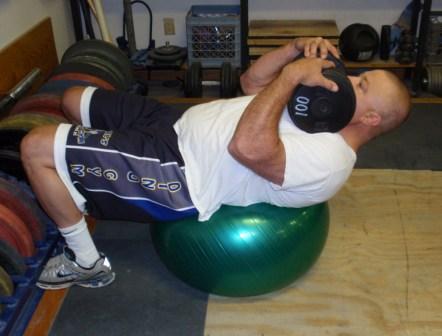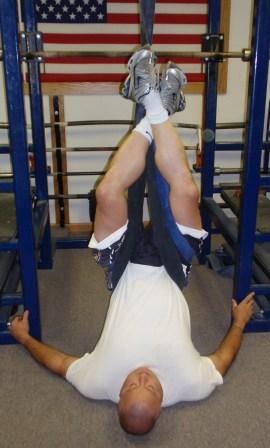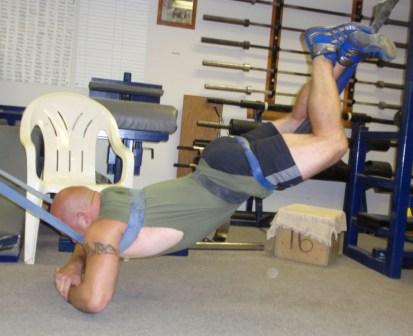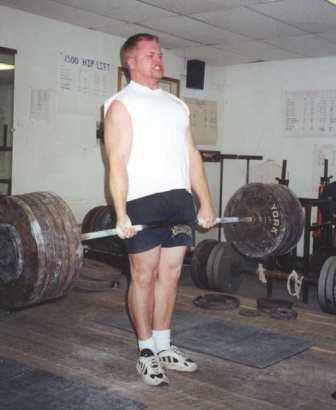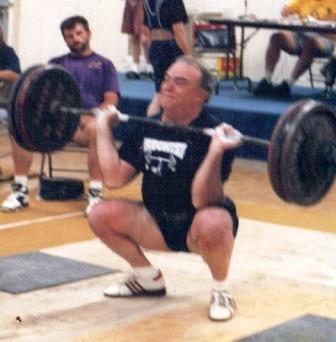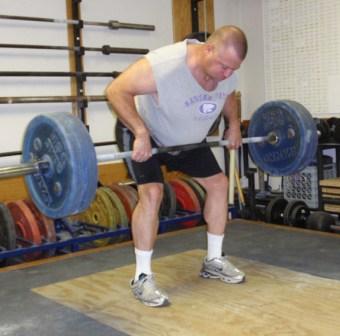Taking Care of Your Back – Part 3
Part 3 – Have Strong Abs
by Al Myers
Training the abdominal muscles is often overlooked by weightlifters. Bodybuilders usually go overboard with ab training because they are in search of the perfect 6-pack. Us weightlifters are just as happy having a perfect keg instead. I learned in college during a physiology course that opposing muscle groups should be of comparable strength in order to prevent injury due to muscle imbalances. That hit home for me in my training. It is easy to overlook less important muscle groups because they don’t seem to be “the major players” needed in a certain lift. Think about this, and I’m going to use Powerlifters as my example. Are most Powerlifters upper back as strong as their pec and front shoulder muscles? Are their hamstrings as strong as their front quad muscles? And are their abs as strong as their back? I would say usually not because the first muscle groups is not directly involved in the strength of the three powerlifts as the second muscle groups, with the result over time leading to muscles strength imbalances, setting up the possibility of injuries.
I’m a real believer in ab training in order to keep your back healthy. I also believe the abdominal muscles should be trained like any other muscle group. Too many lifters make the mistake of thinking the ab muscles are different somehow. These lifters will do sit-ups or crunches EVERYDAY, and wonder why they are not getting stronger or building more abdominal muscles. They will train with repetitions in the 100’s on these movements and wonder why it isn’t working. Would these same lifters even THINK training the squat or deadlift like that would improve their strength?? I train my abs once per week – and train them hard and with low to moderate reps, just like any other exercise. I do sets and rest between the sets like any other muscle group. I like variety in training the abs, and have over 25 exercise that I will train (not in the SAME workout) in a random fashion. I also pick ab exercises that don’t put undo stress on my lower back on my Thursday workout, as that would defeat the purpose of this “active recovery” day for my back. When I was training for the 1000 pound Roman Chair Sit-up that I did a couple of years ago it was not on this day! It was on one of my back days. This would also apply to other All-Round ab lifts like the Roman Chair Bench Press. I have my ab exercises grouped into three categories – light, moderate, and heavy. I do one exercise from each group, starting with the light ab exercise first, then the moderate ab exercise, and finally the heavy ab exercise. I try to spend 20 minutes per exercise, so my entire ab workout can be accomplished in 1 hour per week. My abs are always sore the next day after this workout. I don’t do more than 10 reps per set on any exercise.
One of my favorite ab exercises is an exercise I have called the Front Ab Raise on the Stability Ball. OK – I admit I have one of those silly stability balls in my gym that have been popularized by Health Clubs across the country! At first, I thought those balls seemed like they wouldn’t be of any value to a Hard-Core lifter like myself, but I always like to “test things out” before I form an opinion. I found that using a Stability Ball with this exercise will put a heavy strain on the abdominal muscles and at the SAME time put no stress on my lower back. I have a couple of other ab exercises I train using the Stability Ball – the Allen Lift (bar extended at arms’ length) and the Abdominal Raise (bar behind my neck), but the Front Ab Raise is my favorite. My advice for the heavy lifter is to buy the strongest Stab Ball you can find, and plan to replace it every 6 months. The plastic will degrade with time and weaken the ball. The forces I put on a Stability Ball is probably more than someone using it for general fitness (often supporting myself at 250# and dumbbells over 100#s). I have not had one “pop” on me yet, as I’m sure this amount of weight exceeds the ball’s rating, but I always replace the Stab Ball if it is worn in any way.
Coming tomorrow – Part 4, Reverse Hyperextensions
